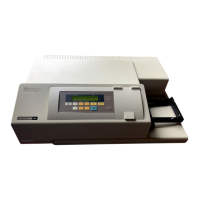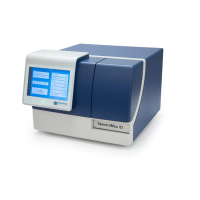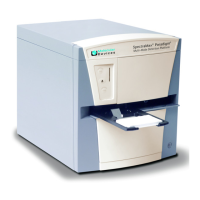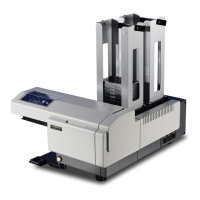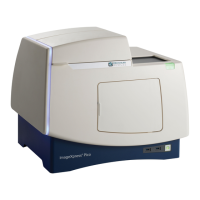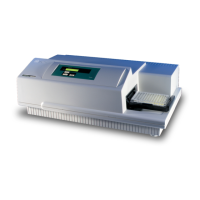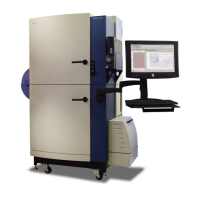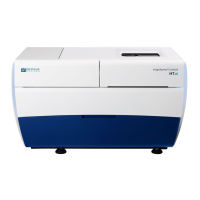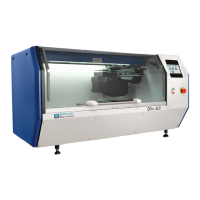What does 'NVRAM Stage offset error' mean on Molecular Devices Laboratory Equipment?
- PpatrickfarmerSep 23, 2025
If your Molecular Devices Laboratory Equipment displays 'NVRAM Stage offset error', it means the stage offset data is unreasonable.
What does 'NVRAM Stage offset error' mean on Molecular Devices Laboratory Equipment?
If your Molecular Devices Laboratory Equipment displays 'NVRAM Stage offset error', it means the stage offset data is unreasonable.
What to do if I see Fatal Error Codes on my Molecular Devices SpectraMax M3 Laboratory Equipment display?
If you're seeing fatal error codes on the display of your Molecular Devices Laboratory Equipment, try these steps: Ensure the cuvette door is closed during the power-up sequence. If the problem persists, leave the instrument on for about five minutes, then turn it off and back on again.
Why is there a signal level saturation in Molecular Devices Laboratory Equipment?
Signal level saturation during a cuvette read on your Molecular Devices Laboratory Equipment could be due to the cuvette door being open.
Why is there a reference level saturation in Molecular Devices SpectraMax M3 Laboratory Equipment?
Reference level saturation during a cuvette read on your Molecular Devices Laboratory Equipment could be due to the cuvette door being open.
What does 'NVRAM Battery' mean for Molecular Devices SpectraMax M3?
The 'NVRAM Battery' message on your Molecular Devices Laboratory Equipment indicates that it is time to replace the NVRAM battery (U3).
What does 'Absorbance boot check failed' mean on Molecular Devices SpectraMax M3 Laboratory Equipment?
If your Molecular Devices Laboratory Equipment displays 'Absorbance boot check failed', it means the plate or cuvette check failed.
What does 'grating motor driver faulty' mean on Molecular Devices SpectraMax M3 Laboratory Equipment?
If your Molecular Devices Laboratory Equipment shows 'grating motor driver faulty', it means the grating motor didn't move to where it was commanded to in a reasonable time.
What does 'monitor ADC faulty' mean on Molecular Devices SpectraMax M3 Laboratory Equipment?
A 'monitor ADC faulty' message on your Molecular Devices Laboratory Equipment indicates an error was found during the periodic check of the ADC system.
What does 'grating error' mean on Molecular Devices Laboratory Equipment?
A 'grating error' on your Molecular Devices Laboratory Equipment means that the grating did not move to its photo interrupt in a reasonable time, or it can't find its photo interrupt.
What does 'carriage motion error' mean on Molecular Devices SpectraMax M3 Laboratory Equipment?
A 'carriage motion error' on your Molecular Devices Laboratory Equipment means that the carriage did not move to either of its photo interrupts in a reasonable time, or it can't find its photo interrupt.
Overview of instrument control via SoftMax Pro Software.
Description of the LCD display and membrane keys for instrument control.
Explanation of absorbance as light absorbed by a solution.
Definitions and formulas for optical density and transmittance.
How pathlength compensation normalizes absorbance values.
Guidance on choosing between Water Constant and Cuvette Reference.
Information on materials that may interfere with PathCheck measurements.
Details on Time-resolved Fluorescence (TRF) measurements.
Principles and calculations for Fluorescence Polarization (FP) mode.
Essential safety warnings and cautions before installing the instrument.
Guidelines for placing and connecting the instrument.
Guidance on optimizing fluorescence assay settings.
Factors affecting absorbance assay optimization.
Procedure to optimize excitation and emission wavelengths for assays.
Using spectral scanning to determine optimal excitation/emission wavelengths.
Settings and considerations for Time-resolved Fluorescence (TRF) assays.
Best practices for optimizing Fluorescence Polarization (FP) assays.
Recommendations for optimizing luminescence assays.
Information on contacting technical support for assistance.
Important safety warnings and cautions for maintenance procedures.
List of error code ranges and their likely causes.
Explanation of fatal and warning error messages.
Comprehensive technical specifications for the reader's performance.
Tables listing excitation and emission wavelengths for various fluorophores.
| Type | Multi-Mode Microplate Reader |
|---|---|
| Wavelength Range | 200 - 1000 nm |
| Light Source | Xenon flash lamp |
| Wavelength Selection | Monochromator |
| Software | SoftMax Pro |
| Detection Modes | Absorbance, Fluorescence Intensity, Luminescence |
| Plate Formats | 6-, 12-, 24-, 48-, 96-, 384-well plates |
| Read Speed | Less than 10 seconds for a 96-well plate |
| Shaking | Linear, Orbital |
| Power Requirements | 100-240 VAC, 50/60 Hz |
